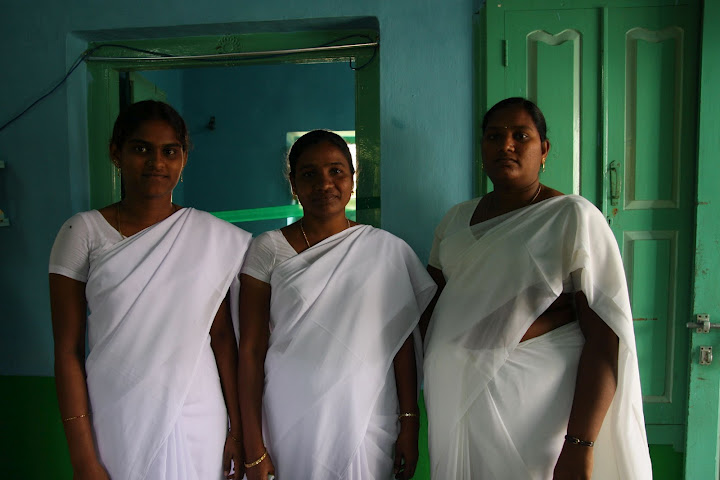In Telemedicine, Often Old Habits Prove Bigger Challenge Than Technology Hurdles
As one heads into Juvvalapalem, a remote village in the delta of river Krishna in the southern Indian state of Andhra Pradesh, it is difficult to imagine that this place could be connected to doctors in a big city.
Head to the GloCare telemedicine centre in the village, an Anavo Global LLC enterprise implemented by Parivartan Foundation. It’s a virtual step into a city doctor’s clinic from this remote village. Inside are patients waiting their turn as the nurse takes another patient through the video-based consultation process. On the other end of the screen is a doctor in Vijayawada, a bustling city on the banks of River Krishna about a 100 km upstream from the village. As the consultation concludes, a nurse explains the medicines prescribed and their usage to the patient, who wants to know if any “needle medicine” is necessary. The nurse patiently explains that not every ailment needs an injection. Old habits die hard.
This group of delta villages with a population of over 100,000 does not have even one qualified doctor. Residents are treated by people calling themselves Rural Medical Practitioners (RMPs), which is mainly a euphemism for a quack. RMPs do not have any medical certification, not even that of a paramedic. Still, residents are used to the ways of the RMP for the lack of a better alternative. The common practice is that the RMP gives an injection for any ailment. It is a wholly different matter that the injection could be a vial of vitamin B. Talk about the placebo effect! This is just one of the challenges we’re dealing with at GloCare, an initiative to provide market-driven quality healthcare solutions to underserved populations. Having run this initiative in these early days, there are four realizations that strike me.
1. Technology will adapt to rural conditions faster than rural consumers’ ability to adapt to it. The Telecom revolution of the late 90s and early 2000s in India has slowly but surely taken Internet connectivity to villages across India. The state-run telecom company provides broadband Internet at subsidised prices, and while the connection does fluctuate a lot, the technology has adapted with the ability to do videoconferencing at low speeds. But the even bigger challenge is changing the mindset of the poor rural recipient of telemedicine. Customers must be educated on the quality difference between quacks and qualified doctors, and be willing to take medication for the entire prescribed duration. Most people stop taking medicines at the first sign of relief from the symptoms. Even the concept of a full dose of antibiotics is hard to sell.
2. Another realization is the paradox of regulation. A plethora of regulations surround healthcare and pharmacy businesses in India, as in every other country. Their ostensible purpose is to ensure a certain quality of services and protect the patients from harm. However, the same regulations can become a hurdle for law-abiding social enterprises to develop low-cost solutions to the rural healthcare challenge in India. That’s especially so when they are pitted against RMPs for whom no rules seem to apply. They do not have license to practice medicine or even nursing. They also do not have a pharmacy license. Yet they do the work of all three – doctor, nurse and a pharmacist – with impunity. Embedded within the community, they are often the only source of any sort of healthcare and travel the villages on motorbikes making house calls. The transport infrastructure is rickety in most of rural India and in such situations, considerations of access beat considerations of quality.

4. The fourth realization is about the tragic circle of morbidity and poverty. There are patients in the villages who suffer from curable ailments. However, ignorance of their condition, lack of access to quality healthcare and financial resource constraints make those ailments a cause for prolonged morbidity. In an economy critically dependent on agriculture and related labour, being unproductive perpetuates poverty and is often responsible for inter-generational transmission of poverty. GloCare telemedicine centers have successfully treated many such cases: a lady who could not do any work because of a bone density problem cured by a regimen of medication and three injections over a month, a person with suspected case of Tuberculosis referred to the WHO approved treatment program, a young man with undetected high blood glucose levels leading to inability to focus on work.
Market-driven, high quality, affordable healthcare for underserved populations remains a challenge. Telemedicine does offer some answers. But it will take a delicate blend of technology, public health activism, and innovative suite of healthcare services to work out the model.
Mandava Harsha Vardhan manages operations for GloCare, a for-profit of rural health delivery startup of Anavo Global LLC implemented by Parivartan Foundation. With a combination of decision-support tools and point-of-care diagnostics, GloCare aims to increase the reach of trained professional and induce rural community participation in the formal system. Patients pay for their services and loss-leading offerings set up pre-paid care packages.
- Categories
- Health Care, Technology, Telecommunications
